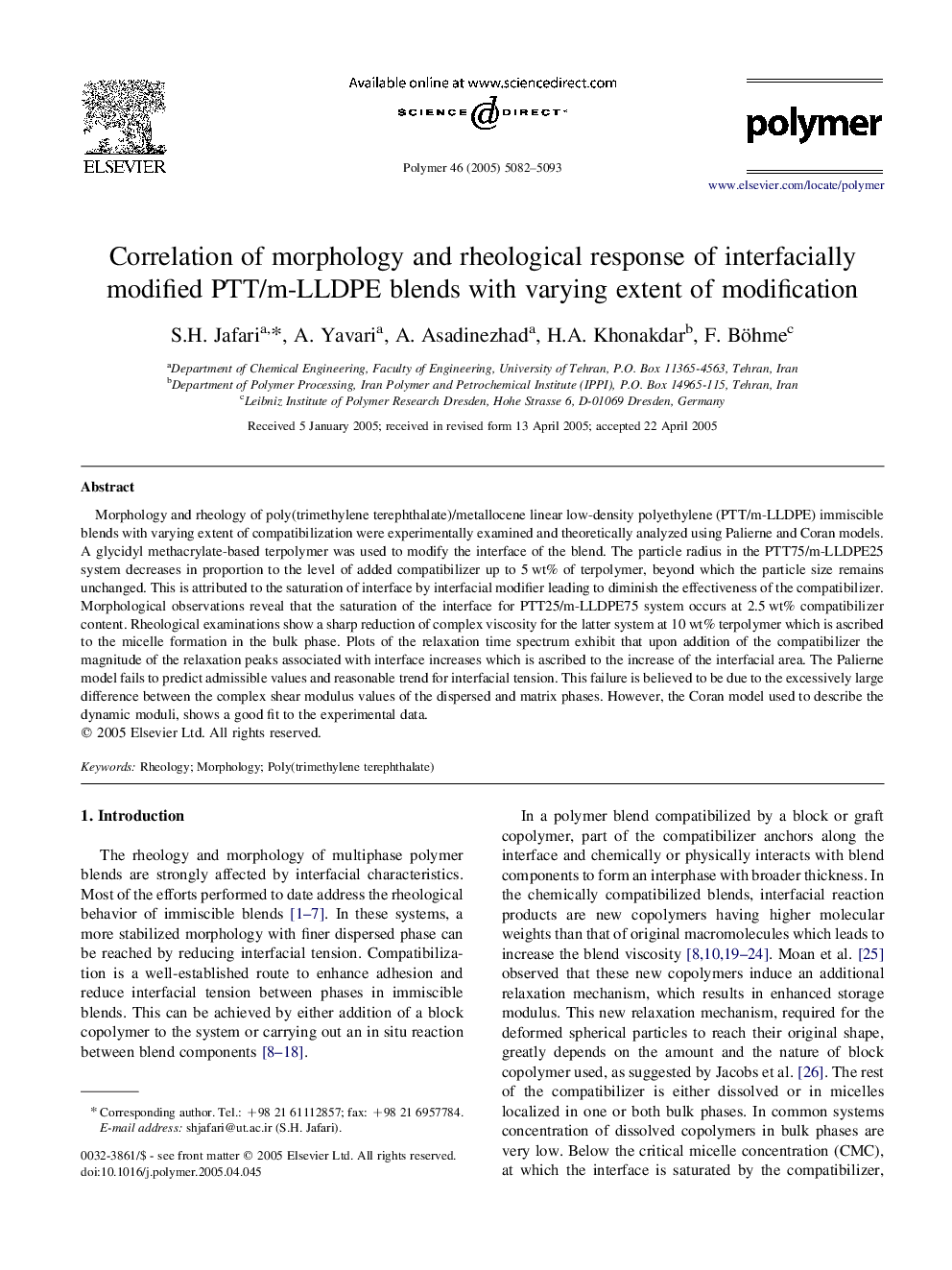| Article ID | Journal | Published Year | Pages | File Type |
|---|---|---|---|---|
| 5191090 | Polymer | 2005 | 12 Pages |
Abstract
Morphology and rheology of poly(trimethylene terephthalate)/metallocene linear low-density polyethylene (PTT/m-LLDPE) immiscible blends with varying extent of compatibilization were experimentally examined and theoretically analyzed using Palierne and Coran models. A glycidyl methacrylate-based terpolymer was used to modify the interface of the blend. The particle radius in the PTT75/m-LLDPE25 system decreases in proportion to the level of added compatibilizer up to 5Â wt% of terpolymer, beyond which the particle size remains unchanged. This is attributed to the saturation of interface by interfacial modifier leading to diminish the effectiveness of the compatibilizer. Morphological observations reveal that the saturation of the interface for PTT25/m-LLDPE75 system occurs at 2.5Â wt% compatibilizer content. Rheological examinations show a sharp reduction of complex viscosity for the latter system at 10Â wt% terpolymer which is ascribed to the micelle formation in the bulk phase. Plots of the relaxation time spectrum exhibit that upon addition of the compatibilizer the magnitude of the relaxation peaks associated with interface increases which is ascribed to the increase of the interfacial area. The Palierne model fails to predict admissible values and reasonable trend for interfacial tension. This failure is believed to be due to the excessively large difference between the complex shear modulus values of the dispersed and matrix phases. However, the Coran model used to describe the dynamic moduli, shows a good fit to the experimental data.
Related Topics
Physical Sciences and Engineering
Chemistry
Organic Chemistry
Authors
S.H. Jafari, A. Yavari, A. Asadinezhad, H.A. Khonakdar, F. Böhme,
